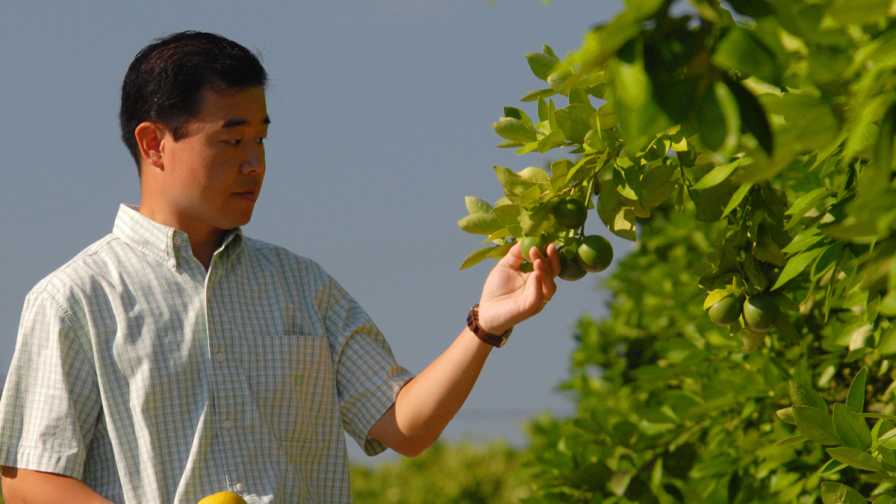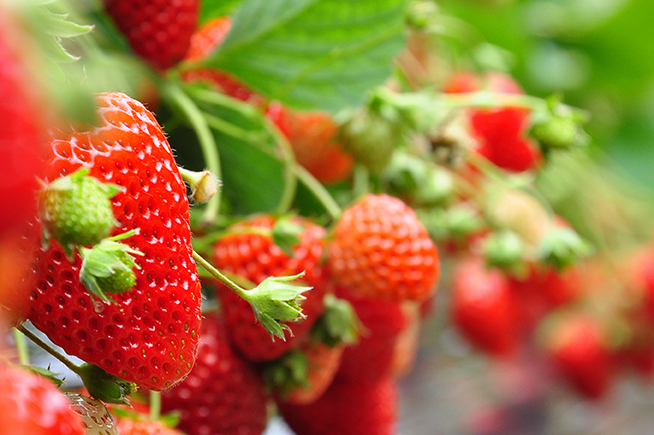Study: New Yield Mapping Method Might Help Citrus Growers Cut Costs

UF/IFAS scientist Daniel Lee inspects immature citrus fruit in a Florida orange grove.
Photo courtesy of UF/IFAS
A new way to detect immature citrus in groves has been found, say UF/IFAS researchers.
By detecting green, immature citrus more accurately and efficiently, growers can plan when and where to apply nutrients when fruit is growing and estimate their yield and profit before harvest, said Daniel Lee, a UF/IFAS professor of agricultural and biological engineering.
Using a consumer-grade digital camera, Lee and his colleagues calculated color differences between the fruit and non-fruit objects, and identified fruit using a pre-determined fruit template. They also removed any incorrectly detected fruit via a shape analysis, Lee said.
In the new study published in the journal Computers and Electronics in Agriculture, scientists took 126 images of fruit on trees and detected 83% immature citrus, using a camera and the new algorithm. This method is different than the previous ones, which can detect fruit from the images taken farther away from the trees.
Detection of mature citrus on a tree is relatively easy because the fruit looks so different from the background in the camera images, Lee said. But the color of immature citrus closely resembles that of the leaves, rendering it more difficult to find.
The finding means growers can count and find the immature citrus faster, Lee said, which could help growers, who rely heavily on manual labor to pick the citrus, save money, the study says.
Lee cautions more research is needed on this method of finding immature citrus. For example, he and his colleagues are seeking a way to get real-time yield in the groves.









